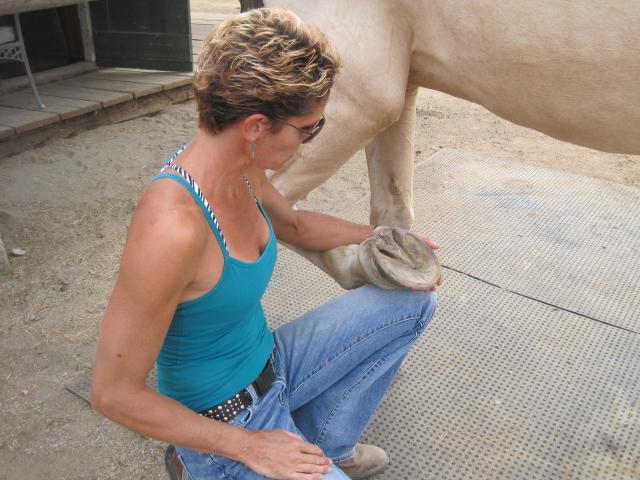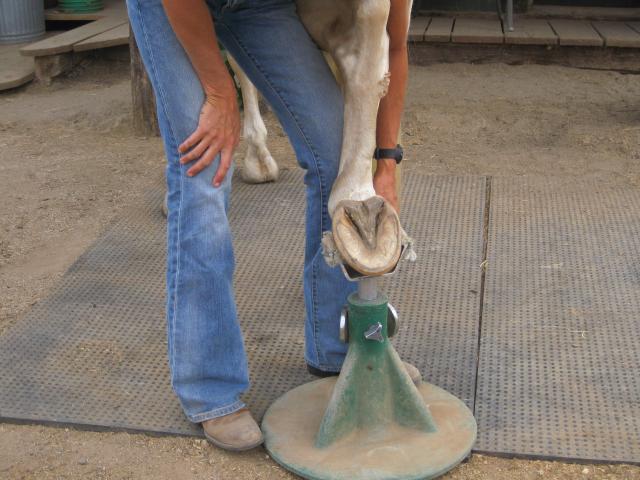What’s comfortable for you as a barefoot hoof trimmer might work for many horses, but not all of them. Any time the horse you’re working on gets wiggly, it’s a good idea to take a step back and try to figure out why. Not only will the horse appreciate it, but it will make your job a whole lot easier.
One of the most basic things I do is carry a full bottle of good quality fly spray. I consider it one of my tools, and I feel it’s one of the best investments I make to ensure a more compliant horse. (I’ll also pause to flick flies off of supporting legs when I see them. That might be the quickest way to gain a horse’s trust ever!)
Where you trim is important as well. Take a minute to look around and observe your surroundings. Will it be better to trim in the crossties, with the arena activity behind you? Or the tie rail, where the horse can watch the activity in front of him? Is there are horse close enough to bite or harass the horse you’re trimming? A tasty patch of grass just close enough to be too much temptation?


Two different ways to hold a front hoof. Resting the foot on your leg (left) is often more comfortable for older horses, or horses with knee or shoulder pain.
Some horses do great with their owners holding them for their trims. But for some, it’s a little overwhelming — as if they’re not sure who they’re supposed to be paying attention to. Other horses are absolutely quiet and happy with the lead rope thrown over their withers, but dislike being tied for trims. Many horses in show barns are accustomed to being cross tied for grooming and tacking up, and seem to prefer cross ties and stand more quietly for trimming, as well. Occasionally, hanging a hay bag for a fidgety horse to nibble at while you trim takes the stress out of the situation, and calms the horse. On the other hand, some horses become so food focused, this is counterproductive.
Then there’s just basic physical comfort. While I definitely have a height at which I prefer to fix my stand for different aspects of the trim, this is sometimes too high, or too low, for the horse’s preference. Any time a horse repeatedly tries to yank a foot away, experiment with where you’re holding the foot. Just a few inches higher or lower, forward or back, is often all it takes to make the horse happier. I even have a couple of horses on my roster who cross over so extremely behind that I trim the hind feet from the opposite side. This can work well for horses with balance problems, as well.

I’m tall, so I generally like to hold the hoof higher, but for some horses,
this stand height would be uncomfortable.
In very painful horses, or older horses with advanced arthritis, doing only a little bit on one foot before working a little on another foot works a treat. My own 28 year old gelding appreciates this approach…clean up frog LF, clean up frog RF; clean up bars LF, clean up bars RF; and so on. It’s a bit of running back and forth, but he stands quietly for the entire trim this way, instead of protesting and trying to lie down on me every 2 minutes. Ever so worth the effort!
These are just a few examples, but the concept is simple. The result is a happier horse, an easier trim, and a safer trimmer. What unique ideas have you used to help a horse stand quietly for a trim?




